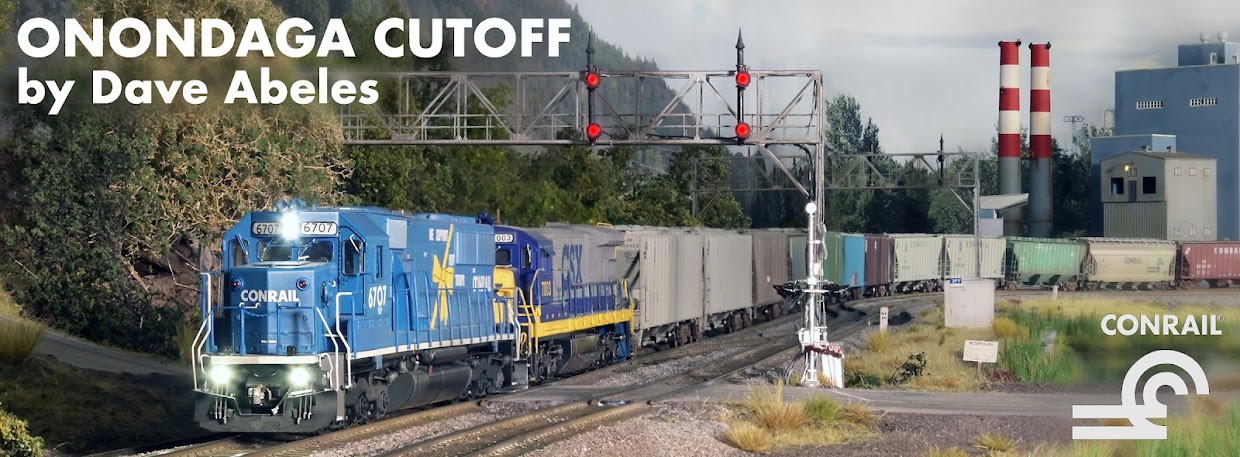This weekend we have a treat for you all, thanks to TJ compiling some video clips of action along the Onondaga Cutoff. These are 'revenue moves' during operating sessions that TJ, one of the regular operators, recorded and edited into this clip. What makes TJ's films even more fun is his use of prototype sounds added to the mix, with locomotives and cars all adding to the experience. Turn up your speakers!
Trackside on the Onondaga Cutoff
Take a look at TJ's other YouTube videos, posted under 'Belt Line Productions' and worth your time. Thanks for sharing this unique view of the OC, TJ!
~RGDave

Hi Dave! Love your work. I model mid-90s Conrail in central PA. I'm trying to determine what percentage of Conrail cars one would see on a typical mixed freight train. I hear stories of around 50%? In addition, on industries served by Conrail, would most cars be Conrail, or would that be a 50/50 mix as well? Thank you!
ReplyDeleteJay-R, thanks for reaching out and for your support!
ReplyDeleteThis is a good discussion piece. The cars in different manifest trains can vary widely, but some constants are good guidelines. Consists will reflect the nature of the traffic moving on trains from their cities of origin and destination. Trains like PIOI, PICA, PIES, and PIBA would see plenty of tank cars, for example, and the vast majority of those are owned by leasing companies. Gray covered hoppers from ACFX, UTLX, DOCX, etc would be common as well. However, trains that serve industries that load cars on Conrail would see a lot of Conrail cars. Scrap yards, steel products, automobile parts and finished cars, grain and food products, and aggregates would all move in Conrail cars: the railroad that loads collects the majority of the revenue for that car, and using a Conrail car would enable more revenue to be kept by Conrail.
For industries served by Conrail, it would be a mix and largely dependent on industry. Should the industry own its own cars, you'd see those predominate: think chemicals, plastic pellets, finished food products, etc. If one of those is not available the industry could rent a car from Conrail or from a leasing company. For example, if a food warehouse industry is receiving a load of perishable fruit from California, it would likely be loaded in a car from the railroad that originated the load (SP, UP, etc) or perhaps an FGEX (Fruit Growers Express) car leased to that railroad or industry instead of a Conrail car.
In general, a mix of Conrail gondolas, boxcars and covered hoppers will appear next to a bunch of leased tank cars, covered hoppers, Railbox boxcars, and cars from other railroads.
Internet photos are a good guide for you, and have helped me quite a bit for the Chicago Line. I also highly recommend the book 'Conrail Commodities' by Jeremy Taylor for reference: https://www.amazon.com/Conrail-Commodities-Jeremy-Taylor/dp/0964042509
Enjoy!
~Dave
Dave: Great layout and video! The only thing missing is the narration by the "Pentrex guy". I love the railfan "vibe" of your layout. Sure brings back some great memories railfanning Big Blue on the St. Louis Line west of Terre Haute, Indiana back in the late 80's and early 90's.
ReplyDeleteMatthew Harrell
Springfield, IL
Thanks Matt! That's some of the energy that drives the progress - it's a time machine of sorts and allows us to go back and experience some of the Conrail energy from those good days.
ReplyDeleteI appreciate your support and comment!
~Dave